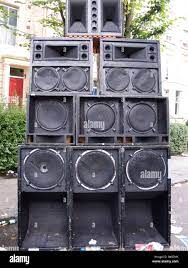A webpage is a digital document displayed on the internet that can contain a variety of content, including text, images, videos, and interactive elements. It is designed using HTML (Hypertext Markup Language) to structure the content and CSS (Cascading Style Sheets) to define its appearance.
HTML is the backbone of a webpage, providing the structure and layout of the content. It uses tags to define different elements such as headings, paragraphs, links, images, and forms. These tags tell the web browser how to display the content on the screen.
CSS works alongside HTML to style the webpage’s layout and design. It controls aspects such as colours, fonts, spacing, and positioning of elements on the page. By separating content (HTML) from presentation (CSS), web developers can create visually appealing and user-friendly webpages.
Webpages can be static or dynamic. Static webpages have fixed content that remains the same for all visitors. Dynamic webpages, on the other hand, can change based on user interactions or data input. They often use programming languages like JavaScript to add interactivity and functionality.
In today’s digital age, webpages play a crucial role in communication, information sharing, e-commerce, entertainment, and much more. Businesses use websites to promote their products or services, while individuals create personal blogs or portfolios to showcase their work.
With advancements in technology and design trends constantly evolving, creating an engaging and responsive webpage has become essential for attracting and retaining online visitors. Web developers strive to build webpages that are not only visually appealing but also accessible across different devices and browsers.
In conclusion, a webpage is a powerful tool that allows individuals and businesses to connect with a global audience through the internet. By utilising HTML, CSS, and other web technologies effectively, one can create compelling digital experiences that inform, entertain, and engage users worldwide.
7 Essential Tips for Creating an Engaging and Effective Webpage
- Ensure your webpage is mobile-friendly for a better user experience.
- Use high-quality images and videos to make your content visually appealing.
- Optimize your webpage loading speed for improved performance.
- Create clear and concise headings to organize your content effectively.
- Include relevant keywords in your content for better search engine visibility.
- Make use of white space to enhance readability and overall design aesthetics.
- Regularly update and maintain your webpage to keep it fresh and engaging.
Ensure your webpage is mobile-friendly for a better user experience.
Ensuring that your webpage is mobile-friendly is essential for providing a better user experience. With the increasing number of people accessing the internet on their mobile devices, it is crucial to optimise your webpage for smaller screens and touch interactions. A mobile-friendly design not only enhances usability but also improves loading times and overall performance, leading to higher user satisfaction and engagement. By adopting responsive design principles and testing your webpage across various devices, you can cater to a wider audience and deliver a seamless browsing experience on smartphones and tablets.
Use high-quality images and videos to make your content visually appealing.
To enhance the visual appeal of your webpage, it is advisable to incorporate high-quality images and videos. By using visually engaging multimedia content, you can captivate your audience and convey information in a more compelling manner. High-resolution images and videos not only make your content more attractive but also help to create a professional and polished look for your webpage. Remember, a picture is worth a thousand words, so investing in quality visuals can significantly enhance the overall user experience and leave a lasting impression on visitors.
Optimize your webpage loading speed for improved performance.
Optimising your webpage loading speed is essential for enhancing performance and user experience. A fast-loading webpage not only improves user satisfaction but also boosts search engine rankings, as speed is a crucial factor in determining website visibility. By minimising file sizes, leveraging browser caching, and reducing server response times, you can significantly improve your webpage loading speed. Additionally, optimising images and using efficient coding practices can further enhance performance, ensuring that visitors have a seamless and enjoyable browsing experience on your site.
Create clear and concise headings to organize your content effectively.
Creating clear and concise headings is a fundamental tip for organising content effectively on a webpage. Headings provide structure and hierarchy to the information, making it easier for users to navigate and understand the content at a glance. By using descriptive headings that accurately reflect the topic of each section, visitors can quickly identify the key points and find the information they are looking for without having to read through the entire page. Well-crafted headings not only improve readability but also enhance the overall user experience by guiding users through the content in a logical and intuitive manner.
Include relevant keywords in your content for better search engine visibility.
Including relevant keywords in your webpage content is essential for improving search engine visibility. By strategically incorporating keywords that are related to your content and target audience, you can increase the chances of your webpage appearing higher in search engine results. Search engines use these keywords to understand the context and relevance of your content, making it easier for users to find your webpage when they search for related topics. Therefore, conducting keyword research and optimising your content with relevant keywords can significantly enhance the visibility and reach of your webpage online.
Make use of white space to enhance readability and overall design aesthetics.
Utilising white space effectively on a webpage is crucial for enhancing readability and improving the overall design aesthetics. By incorporating ample white space around text, images, and other elements, the content becomes easier to digest and visually appealing. White space helps to create a sense of balance and harmony on the page, allowing important information to stand out and guiding the user’s eye through the content effortlessly. Additionally, strategic use of white space can make a webpage feel less cluttered and more inviting, ultimately leading to a better user experience.
Regularly update and maintain your webpage to keep it fresh and engaging.
Regularly updating and maintaining your webpage is essential to ensure it remains fresh, relevant, and engaging for visitors. By refreshing content, adding new information, and incorporating the latest design trends, you can keep users interested and encourage them to return. Additionally, regular updates can improve search engine rankings, driving more traffic to your site. By staying proactive in managing your webpage, you demonstrate a commitment to providing valuable and up-to-date content, ultimately enhancing the overall user experience.



